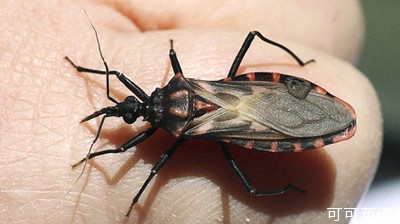商業(yè)報道
Pharmaceuticals
藥物
Give, and it shall be given unto you
贈人玫瑰手有余香
Drug companies in Japan invest in curing diseases of the poor
日本藥品公司投資為窮人治病
JAPAN's pharmaceutical firms are an inventive bunch: only the American and British drugs industries produced more new medicines between 2005 and 2008.
日本制藥企業(yè)是充滿創(chuàng)造力的工廠,在2005到2008年中,只有美國與英國的制藥工業(yè)研發(fā)的新藥比日本多。
But their record on healing the diseases of the poor is not so good.
不過他們在治療窮人上表現(xiàn)欠佳。
 The Access to Medicine Foundation, a non-profit group, tracks drug firms' efforts to serve patients in developing countries; and in its ranking of the 20 biggest ones, Japanese firms occupy four of the bottom six rungs.
The Access to Medicine Foundation, a non-profit group, tracks drug firms' efforts to serve patients in developing countries; and in its ranking of the 20 biggest ones, Japanese firms occupy four of the bottom six rungs.
非盈利組織The Access to Medicine Foundation記錄了制藥公司在救助發(fā)展中國家病人上的表現(xiàn)。在20所最大的制藥公司中,日本公司在最后6位中排名第四。
That may change. On November 8th the Global Health Innovative Technology Fund announced its first grants, to advance treatments for malaria, tuberculosis and Chagas disease, a potentially fatal and frequently debilitating ailment spread by ghastly, bloodsucking “kissing bugs”.
但這數(shù)字有可能改變:11月8號,全球健康革新科技基金宣布它的首筆用于改進(jìn)瘧疾、肺結(jié)核和錐蟲病的治療手手段的撥款。
The fund, launched earlier this year, is a public-private partnership that includes five Japanese drugmakers: Astellas, Daiichi Sankyo, Eisai, Shionogi and Takeda.
這基金成立于今年早些時候,是由5家公私合營的日本制藥企業(yè)組成的,成員為Astellas, Daiichi Sankyo, Eisai, Shionogi and Takeda。
Criticism of pharma companies for restricting low-income countries' access to drugs reached a head at the turn of the millennium, when makers of life-saving HIV treatments refused to provide them at affordable prices to patients in Africa.
在千年之交制藥廠限制低收入國家購買藥物途徑,那時HIV治療品制藥廠拒絕以合理的價格將藥品賣給非洲病人。
The resulting outrage forced the drug firms to rethink their policies.
這一行為遭到指責(zé)。而這一引起公憤的結(jié)果迫使制藥公司重新思考他們的政策。
Today most of the biggest ones tout themselves as allies in the fight against infectious disease.
現(xiàn)在大多數(shù)大型制藥公司作為聯(lián)盟聯(lián)合起來與傳染疾病作斗爭。
In some cases this means donating medicines, or licensing technology to makers of generic drugs.
某些情況下這意味著捐藥或者下放技術(shù)給一般藥物廠。
In others it means collaborating to develop a new vaccine or treatment.
或者意味著合作開發(fā)新疫苗和治療方式。
For example, GlaxoSmithKline, a British firm that tops the Access to Medicine Foundation's index, will next year seek regulatory approval for a malaria vaccine.
例如GlaxoSmithKline一家英國制藥廠將會在明年尋找瘧疾疫苗的調(diào)整方法。
The Bill & Melinda Gates Foundation helped to finance its development.
比爾蓋茨夫婦基金將會投資這一研發(fā)。
With the GHIT Fund, the five Japanese firms are trying a slightly different model.
這5家日本企業(yè)希望用GHIT基金來發(fā)展一個有所不同的模式。
Each will put in 1m a year for five years.
在5年中,每家公司每年會投100萬美金。
Together with investments from the Gates Foundation and Japan's government, the fund will add up to more than 100m.
加上來自蓋茨基金和政府投資,這一基金將會有超過1億美金的資金。
This will be doled out to partnerships between Japanese and foreign institutions.
這會少量的發(fā)放給日本和外國研究所。
For instance, researchers at Osaka University and Gulu University in Uganda will get 735,000 to improve the effectiveness of another proposed malaria vaccine.
馬上,Osaka大學(xué)和烏干達(dá)Gulu大學(xué)的研究者就會獲得735,000用于提高另一種瘧疾疫苗的效率。
An important question for the fund, as with any similar endeavour, is how much the resulting new treatments will cost.
對于這個基金來說一個重要的問題就是在同等努力下研發(fā)新治療方法要花多少。
GSK plans to sell its malaria vaccine at 5% above the cost of production, with proceeds pumped back into research for infectious diseases.
GSK計劃以生產(chǎn)價的105%來出售他的瘧疾疫苗,作為研究傳染性疾病的后續(xù)資金。
Even so, some advocates worry it will still be too expensive.
即使這樣,一些支持者擔(dān)心定價仍有點(diǎn)高。
B.T. Slingsby, a former Eisai executive who now runs the GHIT Fund, says that drugs developed in its research programmes will be licensed without royalties in the poorest countries.
之前B.T. Slingsby Eisai的總經(jīng)理,現(xiàn)在GHIT的經(jīng)營者說這個項(xiàng)目研發(fā)的藥品在那些貧窮國家中被免版稅使用。
In other markets, the fund will aim more or less to break even.
在其他市場中該基金則希望或多或少的打破平衡。
The companies' beneficence may reap long-term rewards, however.
但是公司的利益可能是長期回報。
For some time they have been seeking to expand their presence beyond Japan's shores.
有時他們在尋求途徑希望自己的定位不僅僅是日本企業(yè)。
In 2011 Takeda bought Nycomed, a Swiss drugmaker, for about 14 billion.
2011年Takeda以140億美金的價格買下了瑞士制藥廠Nycomed。
In 2008 Daiichi Sankyo spent nearly 5 billion on Ranbaxy, an Indian drugmaker that has since been plagued by safety issues.
2008年Daiichi Sankyo投資近50億在Ranbaxy。這是一家因?yàn)榘踩珕栴}惹上麻煩的印度制藥公司。
The GHIT Fund will be a far smaller, and less controversial, investment.
GHIT基金會成為縮小規(guī)模減少爭議的組織。
But it will help the firms build links with prestigious research institutions in America and Europe, and eventually introduce Japanese drug brands to patients, and health ministries, in emerging markets.
但他會幫助公司與歐美知名研究機(jī)構(gòu)建立聯(lián)系,并最終讓新興市場的病人和衛(wèi)生部知道日本品牌。
Aid now may lead to profit later.
然后或許就可以創(chuàng)造利益。
 The Access to Medicine Foundation, a non-profit group, tracks drug firms' efforts to serve patients in developing countries; and in its ranking of the 20 biggest ones, Japanese firms occupy four of the bottom six rungs.
The Access to Medicine Foundation, a non-profit group, tracks drug firms' efforts to serve patients in developing countries; and in its ranking of the 20 biggest ones, Japanese firms occupy four of the bottom six rungs.
 The Access to Medicine Foundation, a non-profit group, tracks drug firms' efforts to serve patients in developing countries; and in its ranking of the 20 biggest ones, Japanese firms occupy four of the bottom six rungs.
The Access to Medicine Foundation, a non-profit group, tracks drug firms' efforts to serve patients in developing countries; and in its ranking of the 20 biggest ones, Japanese firms occupy four of the bottom six rungs.